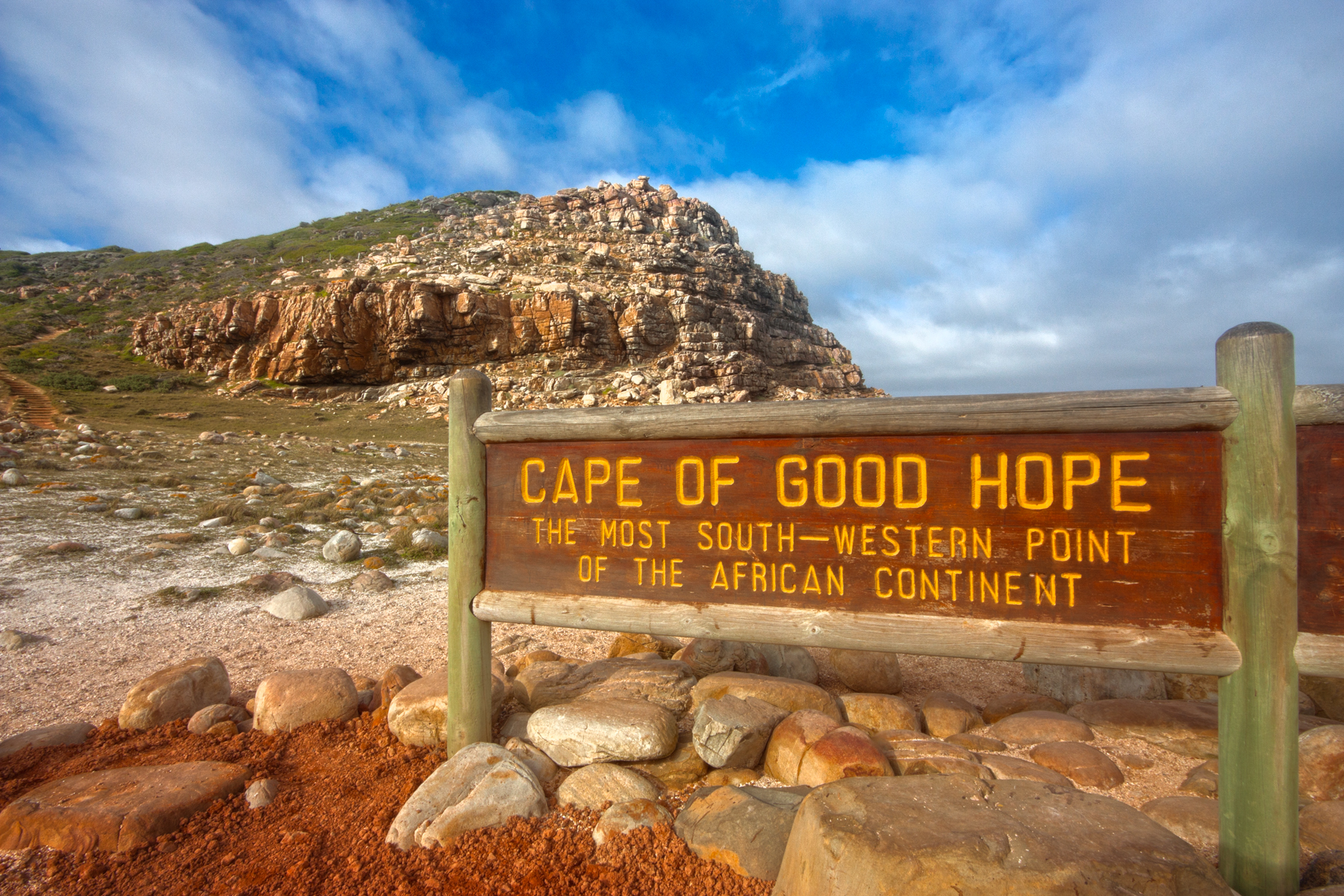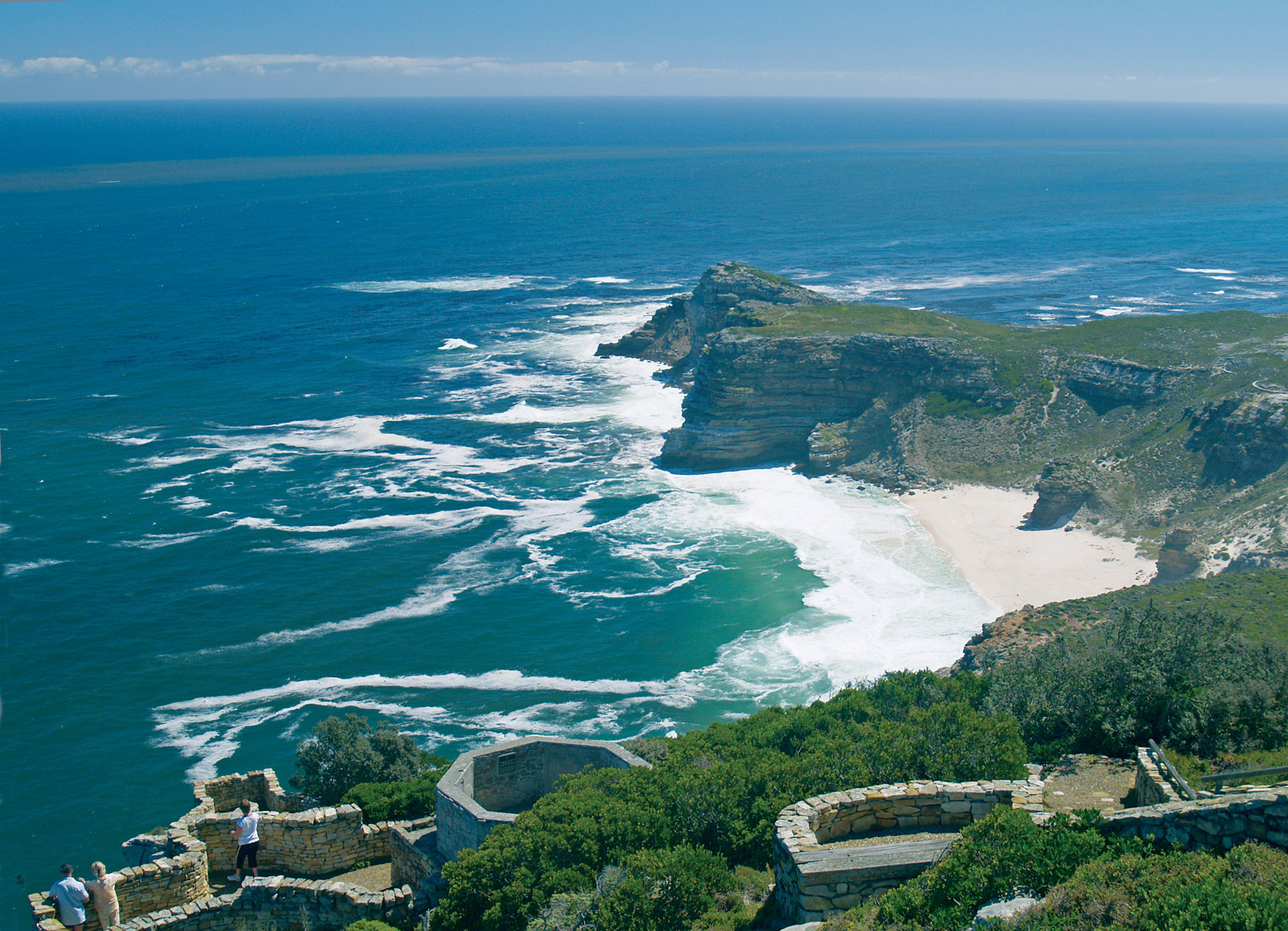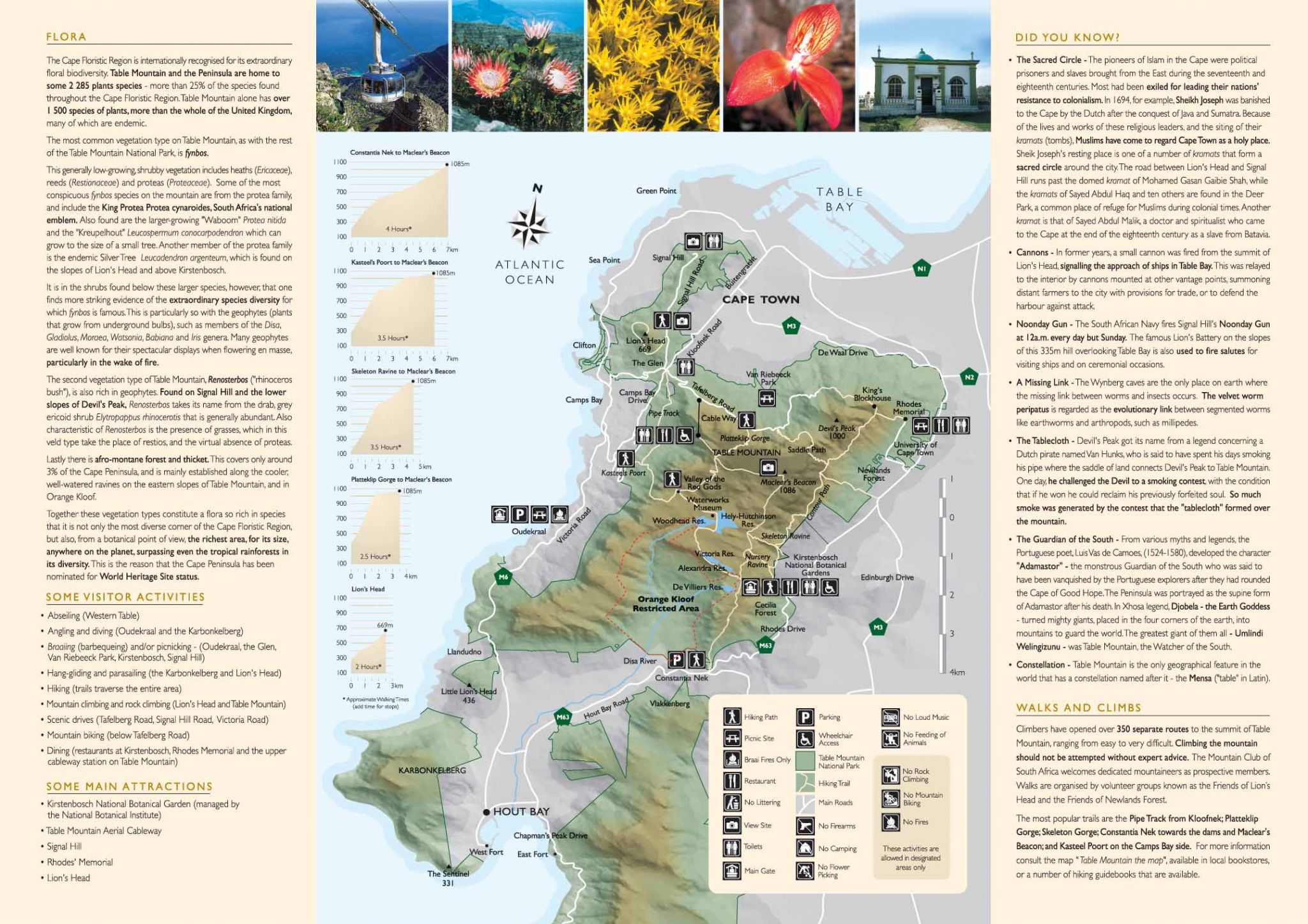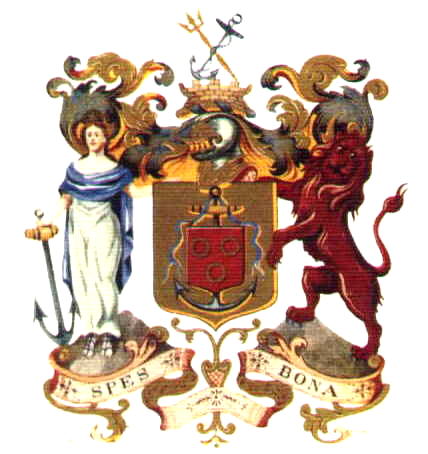
 FIFA Fussball-Weltmeisterschaft 2010
FIFA Fussball-Weltmeisterschaft 2010

 International cities
*World Design Capital
International cities
*World Design Capital
 Silk road
Silk road

 Sport
The Ocean Race
Sport
The Ocean Race
 South Africa
South Africa

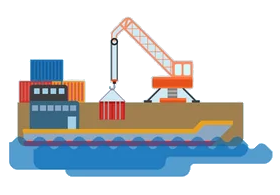 Important port
Important port
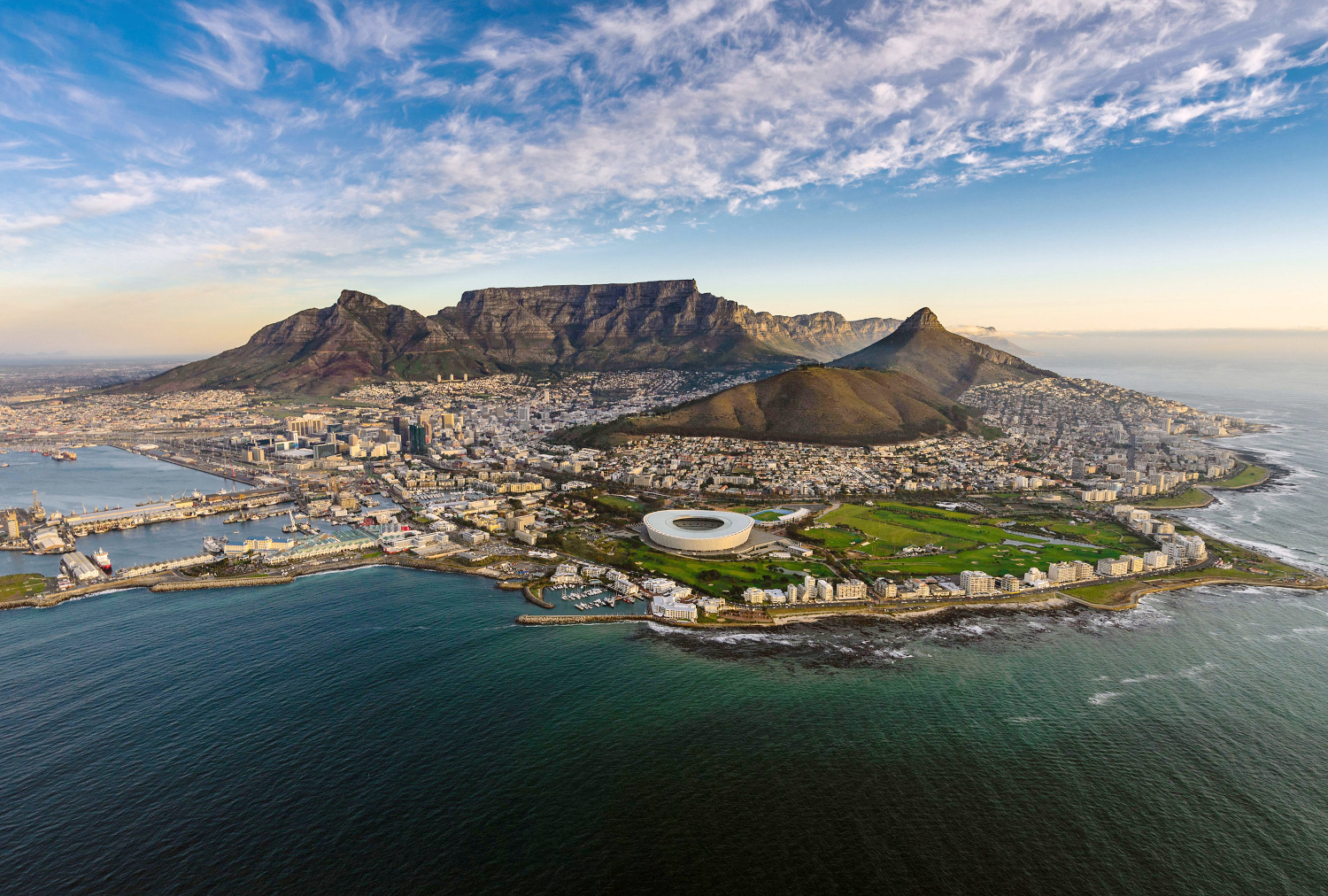
Kapstadt wird von den Südafrikanern gern als “Moederstad” (Mutterstadt) bezeichnet, da es zur Kolonialzeit eine der ersten gegründeten Städte war. Sein Name leitet sich vom nahe gelegenen Kap der guten Hoffnung ab, welches man durchfahren musste um nach Indien zu gelangen. Berühmt ist Kapstadt für seine einzigartige Skyline, aus welcher vor allem der Table Mountain (Tafelberg), der Lion`s Head (Löwenkopf, oder auch als Löwenberg zu finden), sowie der Devil`s Peak (Teufelspitze) herausstechen.
Gegründet wurde Kapstadt 1652, von dem niederländischen Schiffsarzt Jan Anthoniszoon van Riebeeck, als Versorgungsstation für die niederländische Handelsflotte, wenn diese auf ihrem Weg nach Indien unterwegs war. 1814 übernahmen die Briten die Herrschaft über Kapstadt. 1860 lies Prinz Alfred, der zweite Sohn von Königin Victoria, den Grundstein für eine neue, größere Hafenanlage legen. In den folgenden Jahren, unter dem Einfluss der etwa zu selben Zeit entdeckten Goldvorkommen im Landesinneren, wuchs der nun zu klein gewordene Hafen noch einmal an.
Die aus dieser Zeit erhaltenen und in den 90er Jahren aufwendig restaurierten Gebäude machen den Hafen zu einem Victorianischen Kleinod, welches seines gleichen sucht. Ebenso findet sich hier im Hafen das “Robben Island Embarkation Building”. Von hier starten die 3 stündigen geführten Touren auf die Insel.(Quelle:http://www.mytraveltips.de/afrika/kapstadt-eine-reise-in-die-geschichte/)
Kapstadt (englisch Cape Town, afrikaans Kaapstad, isiXhosa iKapa) ist eine der größten Städte Südafrikas. Seit 2004 bildet sie den ausschließlichen Sitz des südafrikanischen Parlaments. Kapstadt ist die Hauptstadt der Provinz Westkap und ist der Kernort der City of Cape Town Metropolitan Municipality, die Metropolgemeinde um Kapstadt. Als von der Statistik erfasster Ort (Main Place) hatte Kapstadt 433.688 Einwohner im Jahr 2011.[1]
Den Namen erhielt Kapstadt nach dem Kap der Guten Hoffnung, das etwa 45 Kilometer südlicher liegt und eine Hauptgefahr auf dem Seeweg nach Indien darstellte. Da Kapstadt die erste Stadtgründung der südafrikanischen Kolonialzeit war, wird es gelegentlich als „Mutterstadt“ (afrikaans: Moederstad, englisch: Mother City) bezeichnet.
开普敦(英语:Cape Town;南非荷兰语:Kaapstad /ˈkɑːpstɑt/;科萨语:iKapa),是南非人口排名第二大城市,也是开普敦都会城区组成部分、西开普省省会,开普敦为南非立法首都,因此国会及很多政府部门亦座落于该市。开普敦以其美丽的自然景观及码头闻名,知名的地标有被誉为“上帝之餐桌”的桌山,以及印度洋和大西洋的交汇点好望角。因其美丽的自然及地理环境,开普敦被称为世界最美丽的城市之一,亦成为南非其中一处旅游胜地。
开普敦最初环绕码头发展,因为由荷兰开往东非、印度和亚洲的商船都会路经此地作补给,久而久之便成为欧洲人在撒哈拉以南非洲地区的第一个长期聚居点。其后欧洲人亦建立了他们的第一所军事基地好望堡,亦即good hope castle,在约翰内斯堡的建立及在德兰士瓦发现大量的黄金和钻石之前,开普敦是非洲南部最大的城市。开普敦拥有南非第二繁忙的机场开普敦国际机场,是世界旅客到南非的主要渠道之一。
ケープタウン(英語: Cape Town、アフリカーンス語: Kaapstad、コサ語: IKapa)は、南アフリカ共和国西ケープ州に位置する都市(都市圏)である。立法府所在地で、同州の州都。アフリカ有数の世界都市である。
テーブル湾に面する同市はその港が有名であるとともに、世界的に有名なテーブルマウンテンや喜望峰などを含んだケープ草原(en:Cape floral kingdom)のなかにある。
ケープタウンはもともと東アフリカ・インド・東アジア貿易に携わるオランダ船の食料基地として建設されており、それはスエズ運河が1869年に建設される200年以上も前のことであった。ヤン・ファン・リーベックが1652年4月6日に到着して南アフリカで初めてのヨーロッパ植民地を設立するのであるが、ケープタウンは急速に成長してヨーロッパ初の前哨基地(キャッスル・オブ・グッドホープ)という元々の目的を超えてしまった。ヨハネスブルグやダーバンが成長するまでは南アフリカ最大の都市であったのである。南アフリカに始めて白人が入植した土地であり、のちの内陸部へのすべての開拓の起点ともなった。そのため、南アフリカの白人からは「マザー・シティー」(母なる都市)との愛称で呼ばれる。
2001年の南アフリカの国勢調査によれば、ケープタウン大都市圏は295万人の人口を持ち、[1] 面積は2499平方キロメートルで南アフリカの他の都市よりも大きい。この結果、人口密度は比較的低くなり1平方キロメートルあたり1158人である。ケープタウンはフランスのニースやイスラエルのハイファと姉妹都市となっている。
Cape Town (Afrikaans: Kaapstad [ˈkɑːpstat]; Xhosa: iKapa; Dutch: Kaapstad; South Sotho: Motse Kapa) is the oldest city in South Africa, colloquially named the Mother City. It is the legislative capital of South Africa and primate city of the Western Cape province.[7] It forms part of the City of Cape Town metropolitan municipality.
The Parliament of South Africa sits in Cape Town.[8] The other two capitals are located in Pretoria (the administrative capital where the Presidency is based) and Bloemfontein (the judicial capital where the Supreme Court of Appeal is located).[9] The city is known for its harbour, for its natural setting in the Cape Floristic Region, and for landmarks such as Table Mountain and Cape Point. Cape Town is home to 64% of the Western Cape's population.[10] It is one of the most multicultural cities in the world, reflecting its role as a major destination for immigrants and expatriates to South Africa.[11] The city was named the World Design Capital for 2014 by the International Council of Societies of Industrial Design.[12] In 2014, Cape Town was named the best place in the world to visit by both The New York Times[13] and The Daily Telegraph.[14]
Located on the shore of Table Bay, Cape Town, as the oldest urban area in South Africa, was developed by the Dutch East India Company (VOC) as a supply station for Dutch ships sailing to East Africa, India, and the Far East. Jan van Riebeeck's arrival on 6 April 1652 established Dutch Cape Colony, the first permanent European settlement in South Africa. Cape Town outgrew its original purpose as the first European outpost at the Castle of Good Hope, becoming the economic and cultural hub of the Cape Colony. Until the Witwatersrand Gold Rush and the development of Johannesburg, Cape Town was the largest city in South Africa.
Le Cap (Kaapstad en afrikaans, Cape Town en anglais, iKapa en xhosa) est une ville d'Afrique du Sud, capitale de la colonie du Cap (1652-1910) puis de la province du Cap (1910-1994). Elle est actuellement la capitale provinciale du Cap-Occidental.
Depuis 1910, Le Cap est également la capitale parlementaire du pays aux côtés de Pretoria (capitale administrative) et de Bloemfontein (capitale judiciaire).
La ville du Cap, fondée en 1652, est considérée comme la cité-mère d'Afrique du Sud. Ville la plus australe du continent africain, elle est établie sur les rives de la baie de la Table et est surmontée par la Montagne de la Table coiffée de deux pics nommés Lion's Head et Devil's Peak. La ville a été baptisée en référence au Cap de Bonne-Espérance situé à plus de 47 km au sud de son centre historique.
Città del Capo (in afrikaans Kaapstad, in xhosa iKapa, in inglese Cape Town, 3 497 097 abitanti nel 2007) è la capitale legislativa del Sudafrica[1] e la terza città più popolosa del Paese. Amministrativamente facente parte della provincia del Capo Occidentale, della quale è capoluogo, il suo centro si trova all'estremità settentrionale della penisola del Capo, a circa 47 km a nord del capo di Buona Speranza.
Fondata nel 1652, Città del Capo fu il primo insediamento europeo del Sudafrica; di qui il suo soprannome di città madre. Capitale della colonia del Capo prima (1652-1910) e capoluogo della provincia del Capo dopo (1910-1994), tutta la storia del Sudafrica moderno, dallo storico sbarco dei primi coloni olandesi al primo discorso di Nelson Mandela dell'era post-apartheid ha qui lasciato indelebili tracce culturali e architettoniche. Antichi edifici in stile coloniale olandese del Capo e di epoca vittoriana coesistono con moderni grattacieli e lussureggianti giardini botanici.
Città del Capo è dotata di un aeroporto internazionale e può considerarsi la capitale del turismo del Sudafrica. I numerosi visitatori sono attratti sia dalla città in sé che dalle bellezze naturalistiche della Penisola del Capo; molti tour del Paese partono da qui, imboccando poi le celebri Wine Route e Garden Route, dirigendosi verso il Karoo, il Boland o la costa meridionale.
Ciudad del Cabo (en afrikáans, Kaapstad /ˈkɑːpstɑt/; en inglés, Cape Town; en xhosa, iKapa) es la segunda ciudad más poblada de Sudáfrica, después de Johannesburgo. Forma parte del municipio metropolitano de la Ciudad del Cabo. Es la capital de la Provincia Occidental del Cabo, así como la capital legislativa de Sudáfrica, donde se ubican tanto el Parlamento Nacional como muchas otras sedes gubernamentales. Ciudad del Cabo es famosa por su puerto, así como por su conjunción natural de flora, la Montaña de la Mesa y Punta del Cabo. Es también el destino turístico más popular de África.4
Situada en la Bahía de la Mesa, se desarrolló originalmente como estación de abastecimiento para los barcos de la Compañía Neerlandesa de las Indias Orientales, que viajaban a África Oriental, India y Asia, más de doscientos años antes de la apertura del Canal de Suez en 1869. La llegada del navegante holandés Jan van Riebeeck el 6 de abril de 1652 significó el establecimiento del primer asentamiento europeo en el África subsahariana. Rápidamente superó su propósito original como el primer puesto de avanzada en el Castillo de Buena Esperanza, convirtiéndose en el centro económico y cultural de la Colonia del Cabo. Hasta la fiebre del oro de Witwatersrand y el desarrollo de Johannesburgo y Durban, Ciudad del Cabo era la ciudad más grande de Sudáfrica.
Desde 2007 la ciudad tiene una población estimada de 3,5 millones de habitantes.5 Su superficie de 2.499 kilómetros cuadrados la convierte en una de las ciudades más extensas del país, con una densidad demográfica comparativamente baja de 1.425 habitantes por kilómetro cuadrado.
En Robben Island (lit. ‘isla de las focas’), una isla muy cercana a Ciudad del Cabo, estuvo preso durante 27 años el líder del movimiento anti-apartheid y Premio Nobel de la Paz, Nelson Mandela.
Desde el fin del Apartheid, Ciudad del Cabo se mantiene como la plaza fuerte de la oposición política al ANC, siendo la única gran ciudad gobernada por la oposición. Ciudad del Cabo ocupa el 85º puesto entre 215 ciudades del mundo por su nivel y calidad de vida, siendo la 1.ª ciudad de Sudáfrica y de África (según este ranquin realizado por el Mercer Human Resources Consulting) y su alcaldesa Helen Zille fue nombrada mejor alcalde de 2008 (en sus tres años de gobierno el PIB de la ciudad creció en un 12 %, la delincuencia descendió en un 90 % y el desempleo cayó del 21 al 18 %).
Ciudad del Cabo es una de las ciudades más multiculturales del mundo, reflejando su rol como mayor destino para inmigrantes y expatriados de Sudáfrica. La ciudad fue nombrada Capital Mundial del Diseño en 2014 por el 'International Council of Societies of Industrial Design'. En 2014, Ciudad del Cabo fue nombrado como el mejor lugar del mundo para ser visitado por el 'American New York Times' y el 'British Daily Telegraph'.
Кейпта́ун (англ. Cape Town, африк. Kaapstad, коса iKapa,сесото Motse Kapa) — второй по численности населения (после Йоханнесбурга) город Южно-Африканской Республики. Расположен на юго-западе страны на побережье Атлантического океана, недалеко от Мыса Доброй Надежды. Столица Западно-Капской провинции, законодательная столица ЮАР. Входит в городской округ Кейптаун.
В Кейптауне расположены парламент ЮАР и многие правительственные учреждения. Город знаменит своей гаванью и известными на весь мир достопримечательностями, такими как Столовая гора (Южная Африка), мыс Доброй Надежды, Кейп-Пойнт. Кейптаун часто называют одним из красивейших городов мира, который является самым посещаемым туристами городом Южной Африки.
Кейптаун развивался как перевалочный пункт для голландских кораблей по пути из Европы в Восточную Африку, Индию и другие части Азии и играл ведущую роль в этом качестве более 200 лет, до открытия Суэцкого канала в 1869 году. Кейптаун, основанный 6 апреля 1652 года колонистами под руководством Яна ван Рибека, долгое время оставался столицей и крупнейшим городом Капской колонии.

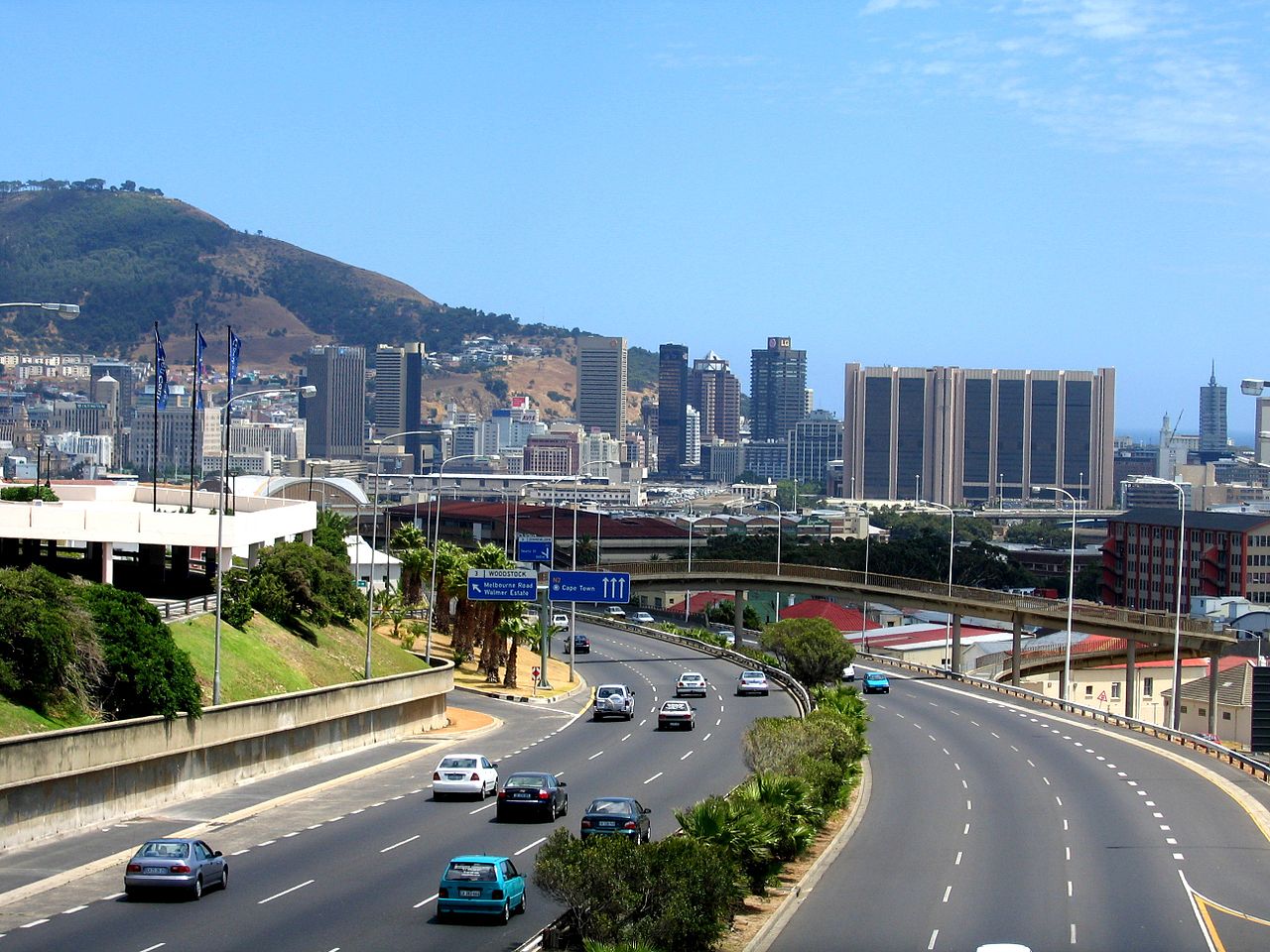
Kapstadt (afrikaans: Kaapstad /ˈkɑːpstɑt/, englisch: Cape Town [ˈkeɪptaʊn], isiXhosa: iKapa) ist nach Johannesburg die zweitgrößte Stadt Südafrikas. Seit 2004 bildet sie den ausschließlichen Sitz des südafrikanischen Parlaments. Kapstadt ist die Hauptstadt der Provinz Westkap und bildet die City of Cape Town Metropolitan Municipality, die Metropolgemeinde um Kapstadt. Die Stadt dehnt sich über eine Fläche von 2455 Quadratkilometern aus und hatte 2011 rund 3,7 Millionen Einwohner.[1] Bürgermeisterin der Stadt ist Patricia de Lille[2] von der Demokratischen Allianz.
Den Namen erhielt Kapstadt nach dem Kap der guten Hoffnung, das etwa 45 Kilometer südlicher liegt und eine Hauptgefahr auf dem Seeweg nach Indien darstellte. Da Kapstadt die erste Stadtgründung der südafrikanischen Kolonialzeit war, wird sie gelegentlich als „Mutterstadt“ (afrikaans: Moederstad, englisch: Mother City) bezeichnet.
